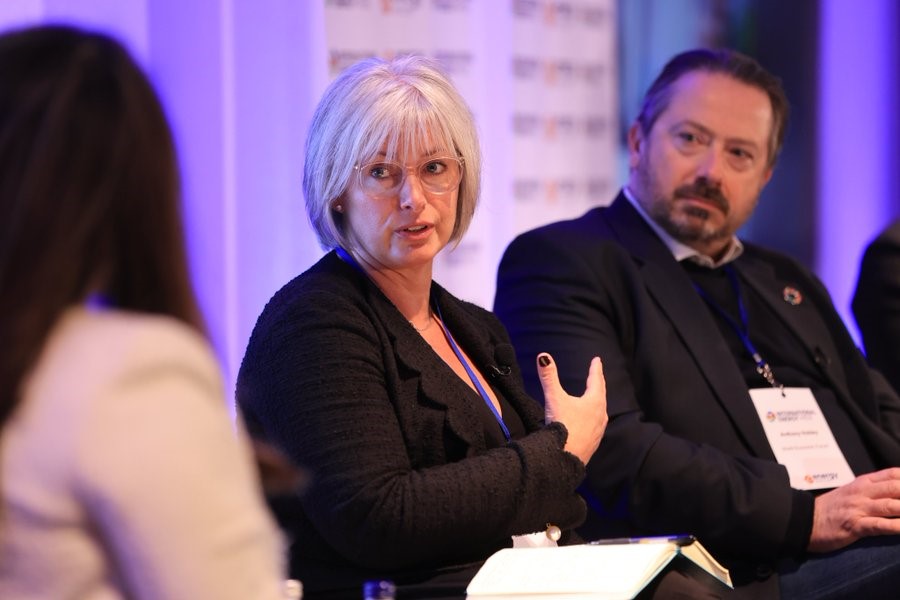
Decarbonising hard-to-abate sectors of industry will take a programme of co-ordination, investment and policy on a scale not seen since Europe’s post-war recovery in the late 1940s.
That’s according to Anthony Hobley, co-executive director of the Mission Possible Partnership, which aims to drive emissions cuts across all areas of industry.
Speaking at International Energy Week in London last week in a debate about how to decarbonise industrial sectors, Hobley said the challenge was “going to require a degree of choreography” on a par with the Marshall Plan, the multi-billion post-war recovery programme enacted in Europe by the US in 1948.
He said industry will not deliver significant emission cuts until the 2030s and 40s, but stressed the need to invest in – and scale – the sector during the current decade.
’70-plus green steel plants’
He said that just to get to the “jumping off point” of lowering emissions, “we are going to need 280m tonnes of green steel: that means 70-plus green steel plants”.
And he added that every other sector faced “the same Everest”.
“It’s not going to happen organically and it’s not going to happen by the normal market forces,” he said, adding that it would be vital “to get dominoes in a row and then get the dominos to fall faster. We need to establish which governments will step in and be the first dominos.”
He said this would require strategic thinking: “We need the right government for steel; the right one for shipping; the right one for cement and so on.
Hobley, who is an executive fellow of the World Economic Forum, stressed that when talking about a ‘mission: impossible’, the technology part is ‘possible’: “The mission: impossible part could be doing it within the timeframes we have.”
Economic models
Louise Kingham, bp’s senior vice-president for Europe, said industrial decarbonisation “is the biggest challenge – but also a massive opportunity. We need to be around the same tables as government and regulators and we need to agree with them what the business and economic models will be.”
Bjørn Otto Sverdrup, who chairs the Oil and Gas Climate Initiative, said cutting industrial emissions was “a two-fold challenge: we need to improve the existing energy system and invest in the future energy system. In this decade we must invest in technology and get the regulatory framework in place.”
Industrial heat
Dr Christian Thiel, chief executive of battery storage company EnergyNest, stressed that “talk about industrial decarbonisation needs to be a talk about industrial heat”.
“Industrial heat is still underestimated.” It’s what keeps the industry awake. Industry relies on heat, whether it’s diary, chemical, steel – I could go on and on.
“It’s not all about electricity to electricity: it’s about heat. It’s not about funding innovation: the technology is there. It’s about scaling the technology.”
He added that is this scaling was achieved, decarbonising industry would not just become mission: possible, “it can be mission: profitable”.
Michele Fiorentino, executive vice-president of strategy & business development at Baker Hughes, said what is required “is a convergence of what’s possible and how to make it cheaper, and what could be possible in the future”.
And he urged governments to “enable the race – not back a single horse”.